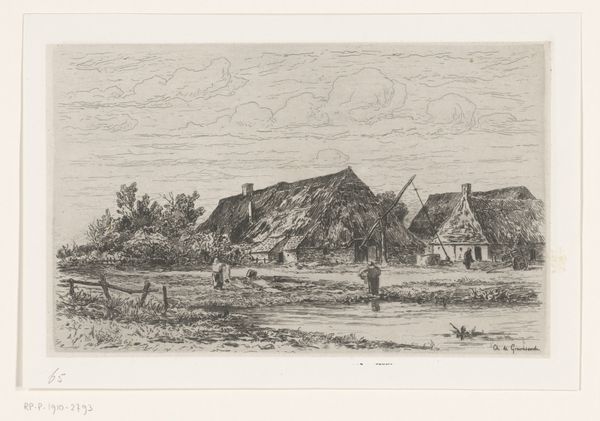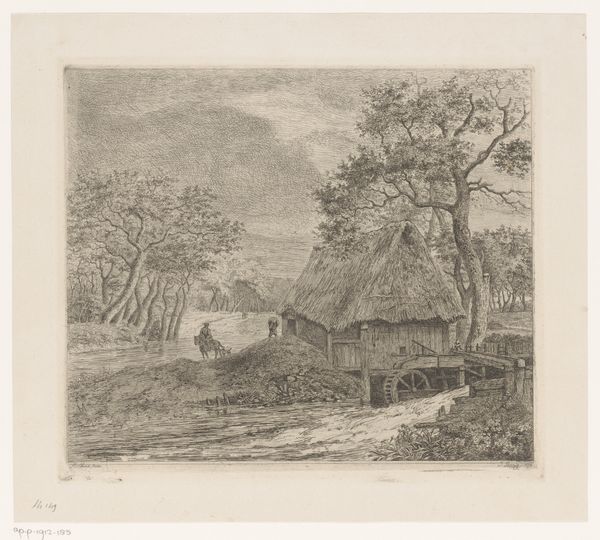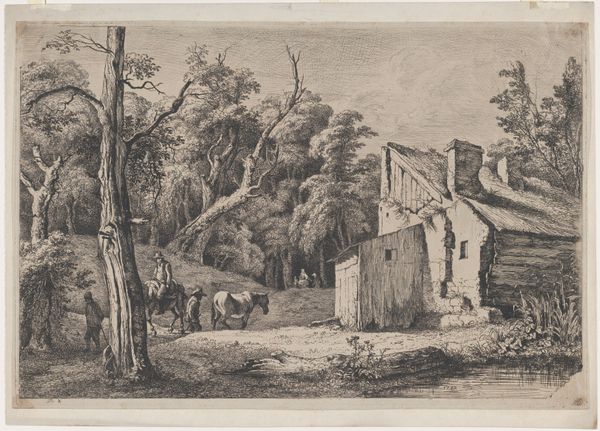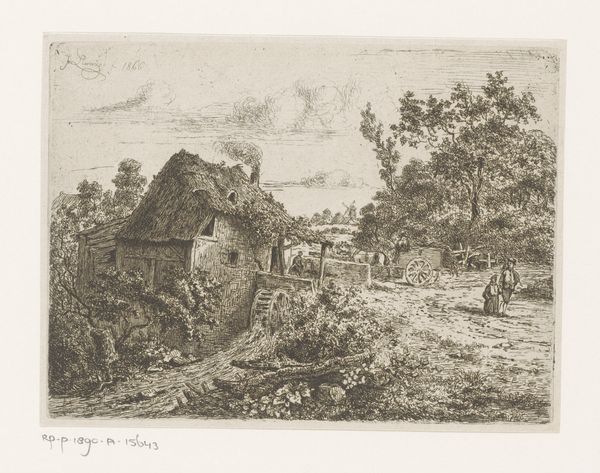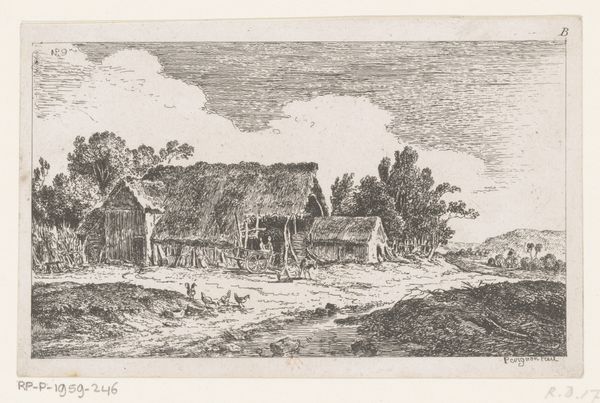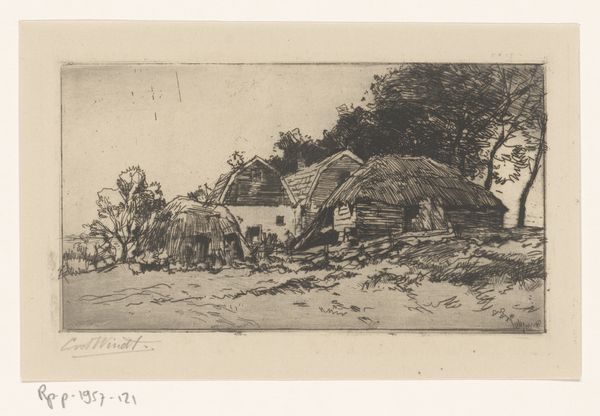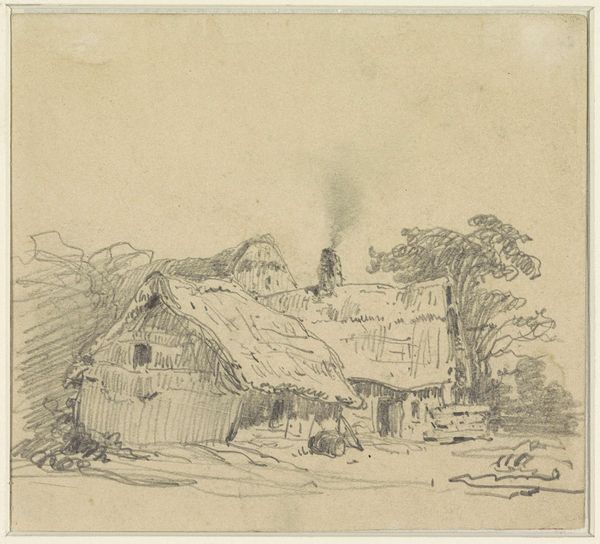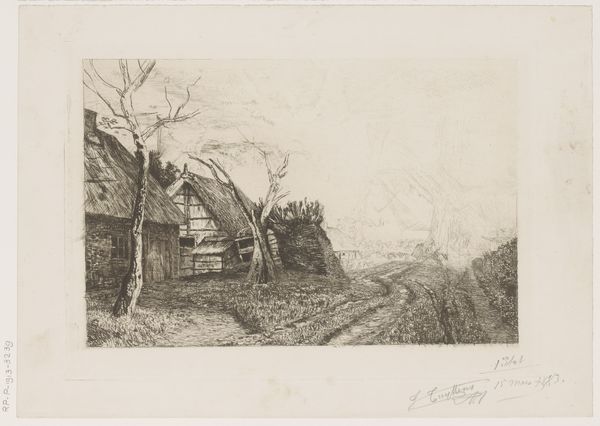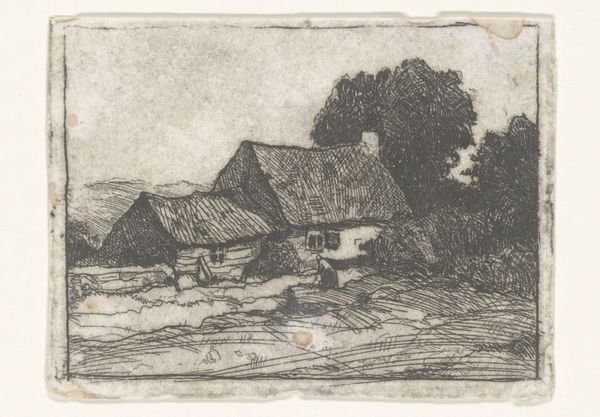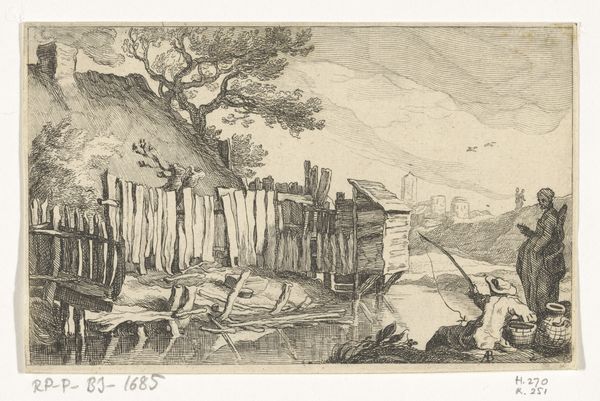
print, etching
#
dutch-golden-age
# print
#
etching
#
landscape
#
etching
#
realism
Dimensions: height 168 mm, width 265 mm
Copyright: Rijks Museum: Open Domain
Curator: Here we have "Boerenerf in Veules," an etching by Carel Nicolaas Storm van 's-Gravesande. Dating from between 1851 and 1910, it offers a glimpse into rural life. Editor: Wow, it’s… atmospheric. A bit melancholic, maybe? The density of the etching really pulls you into that little farmyard. It’s a world away from here, isn’t it? Curator: Indeed. Storm van 's-Gravesande, though working later, aligns with certain sensibilities of the Dutch Golden Age, particularly in his focus on everyday scenes and landscapes. He engages with Realism by illustrating a humble, un-idealized view of rural life, highlighting the socio-economic realities of the period. Think of it as a quiet protest against romantic notions of country living. Editor: That makes sense. There's nothing picturesque or charming about the sheer… practicality of it all. You can almost smell the damp earth and livestock, which is weirdly appealing, and the building looks tired. Curator: Precisely. Notice the compositional elements - the dark, brooding structure dominating the foreground against a lighter, somewhat hazy background. It speaks to a certain kind of labor, doesn’t it? It emphasizes how humanity is deeply intertwined with, and even somewhat shaped by, its environment. How would you say the scale impacts your understanding? Editor: I'd guess, because it's a print, it's fairly small in person? That almost amplifies the intimacy, the feeling of eavesdropping on a private, perhaps hardscrabble existence. A larger format might make it grander, but this scale lends it a quiet dignity. Curator: It truly captures the quotidian realities of its time, pushing against any idealized, upper-class views of rural simplicity. I think understanding this allows a modern audience to reassess their assumptions. Editor: It makes you wonder about the stories hidden within those walls. Whose lives unfolded within that scene? It resonates beyond just historical interest, inviting an empathic, albeit perhaps sentimental, engagement with the past. I am struck by this depiction and its honest capturing of labor and environment. Curator: Agreed. It also provokes an intersectional reading about human engagement within often exploitative systems and its social and cultural implications that ripple through history. It offers an intimate historical perspective, while posing some enduring questions. Editor: Well, for me, it's been a nice reminder to appreciate the little pockets of lived history wherever you find them, especially if they’re etched with such honest grit!
Comments
No comments
Be the first to comment and join the conversation on the ultimate creative platform.

